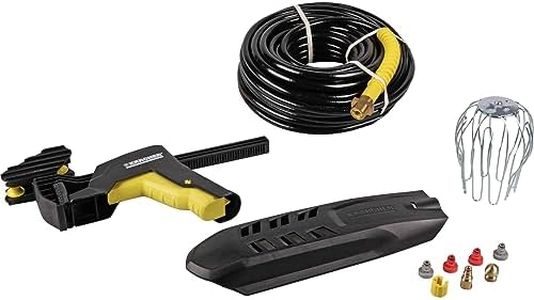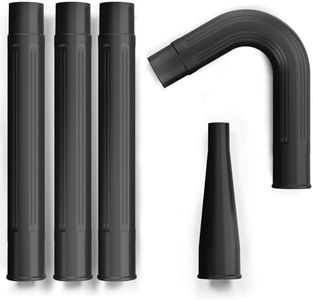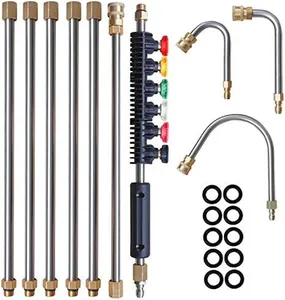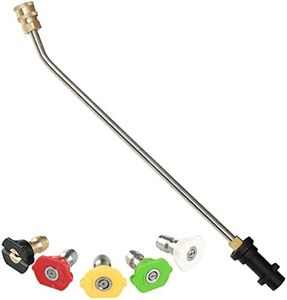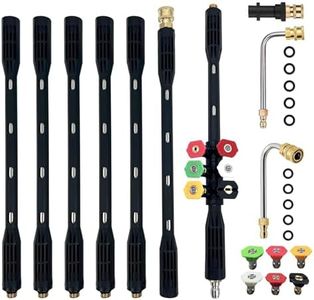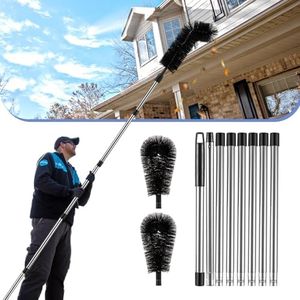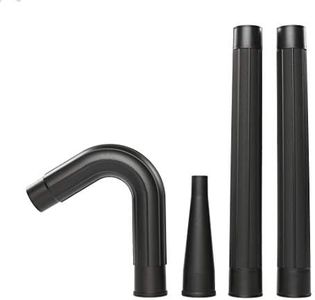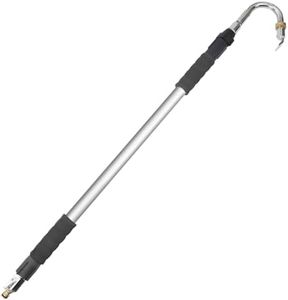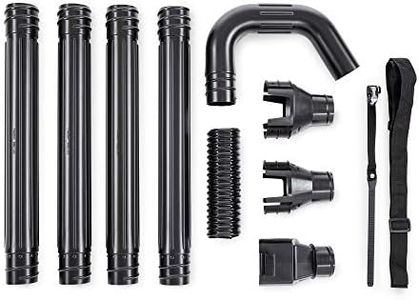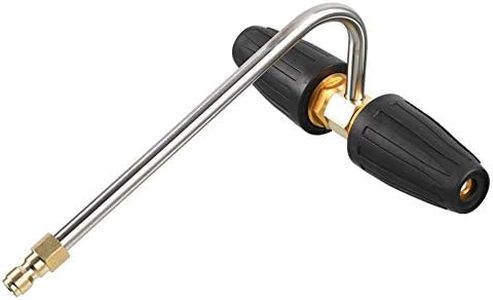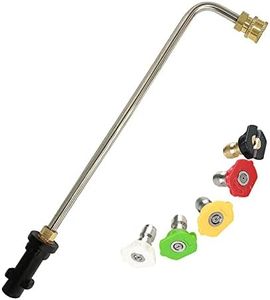We Use CookiesWe use cookies to enhance the security, performance,
functionality and for analytical and promotional activities. By continuing to browse this site you
are agreeing to our privacy policy
10 Best Gutter Cleaning Tools
From leading brands and best sellers available on the web.Buying Guide for the Best Gutter Cleaning Tools
Choosing the right gutter-cleaning tool can make this home maintenance task much easier, safer, and more effective. The best tool for you depends on your house's gutter type, the height of your roof, the amount and type of debris you usually deal with, and your comfort with ladders or working from the ground. Gutter-cleaning tools come in a variety of designs, including scoops, tongs, extension wands, pressure attachments, and even robotic options. Understanding the key features and specs of these tools helps you decide which one will save you time, effort, and keep your property well-maintained.Type of ToolThe main types of gutter-cleaning tools include manual scoops, handheld tongs or claws, extension wands (often for attaching to garden hoses), vacuum/blower attachments, and robotic gutter cleaners. The choice matters because each tool suits different house styles and personal preferences. Manual scoops and tongs are direct and effective for hands-on cleaning, but they might require using a ladder. Extension wands and vacuum/blower attachments allow cleaning from the ground, which is safer but may be less precise. Robotic cleaners travel inside the gutter, doing the work for you, but require straight, obstacle-free gutters. Think about the style of your gutters, your comfort working at height, and how hands-on you want to be—then select a tool type that matches your needs.
Length and ReachLength and reach refer to how far the tool extends, which is crucial for your ability to clean the gutters from the ground or a safe platform. Tools with telescoping handles can reach single or multi-story gutters without a ladder, improving safety. Typically, extension lengths range from about 3 feet to over 20 feet. Shorter tools are easier to maneuver if your gutters are on a single-story roof, while longer options suit two-story homes. Choose a length that covers the height of your gutters comfortably while allowing you to stay in a stable position during cleaning.
Head Design and MaterialThe head is the part of the tool that removes debris, and it comes in different shapes and materials. Some have scoop-shaped or forked heads for grabbing leaves, while others use brushes or nozzle attachments for blasting debris with water. Metal heads provide strength and longevity, especially for heavy debris, while plastic heads are lightweight and gentle on gutters. The right design depends on the most common debris in your area—if you have lots of wet leaves, a scoop may be best; for pine needles or dry debris, a brush or nozzle is effective.
Ease of Use and WeightEase of use and the overall weight of the tool affects how long and comfortably you can use it. Heavier tools can become tiring, especially when extended overhead, while lightweight ones are easier to handle but may not be as robust. If you anticipate regular gutter cleaning or have a large roofline, prioritize a lightweight, ergonomic tool that reduces fatigue. Features like padded grips, easy-adjust extension poles, and simple cleaning mechanisms also contribute to a more comfortable experience.
Compatibility and VersatilitySome gutter-cleaning tools are designed to work with standard garden hoses, wet/dry vacuums, or leaf blowers, while others are standalone units. Compatibility with your existing equipment can enhance versatility and convenience, turning a tool you already own into a gutter cleaner with the right attachment. When selecting a tool, check what it's compatible with and if it fits the shapes and sizes of your gutters. For unusual gutter designs or covers, pick tools specifically built for those requirements.
Safety FeaturesSafety is important when cleaning gutters due to the risk of falls or overreaching. Some tools include safety features like locking telescopic poles, non-slip grips, or angled heads that let you maintain a secure stance on the ground. If you want to minimize time spent on a ladder, look for tools with extra reach and features meant to keep you stable. Always consider your personal safety needs and any physical limitations you have before choosing a tool.
